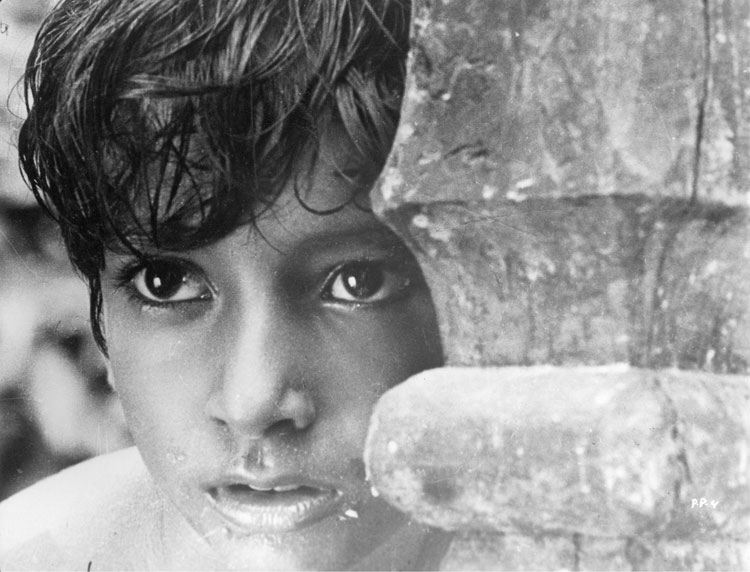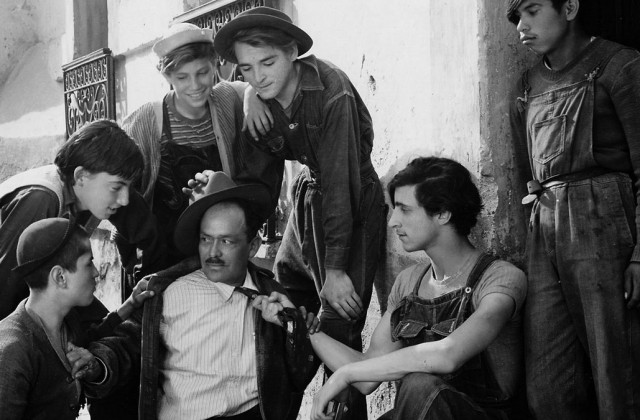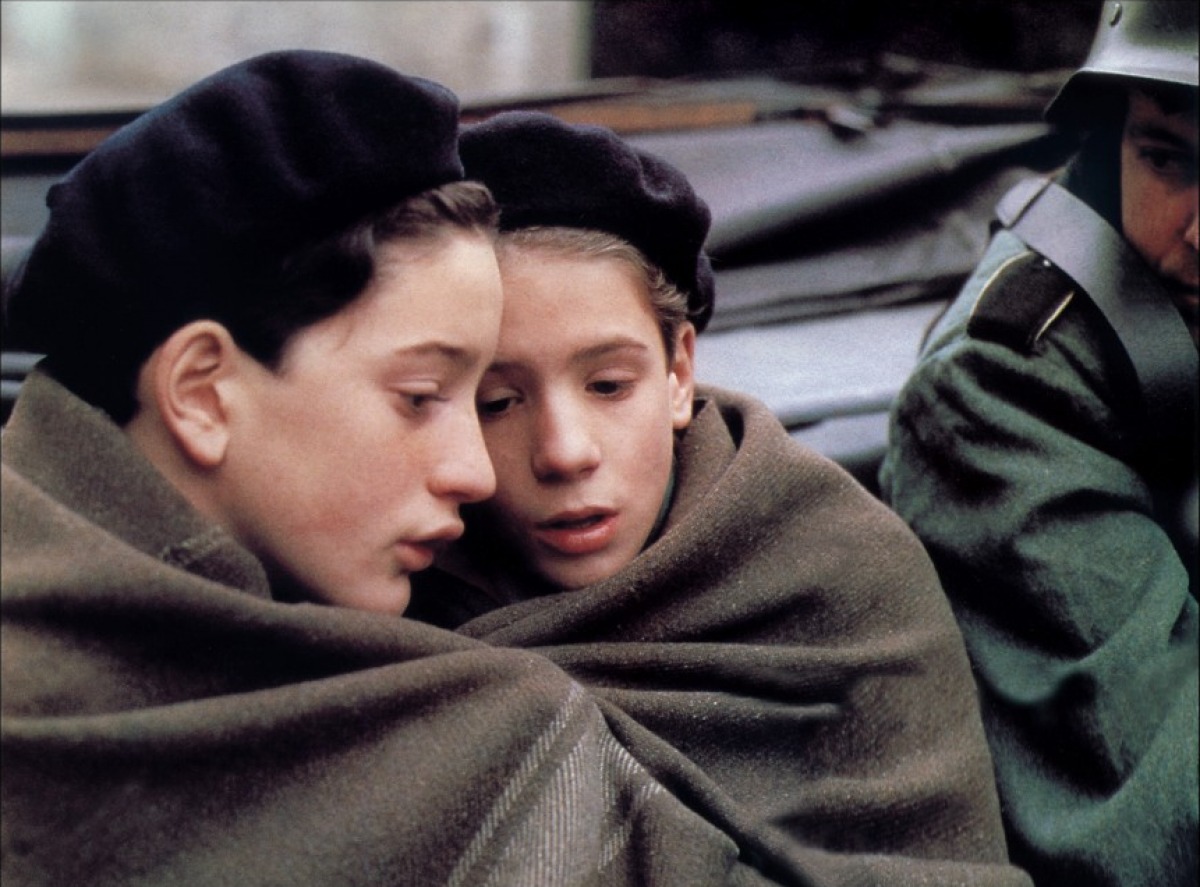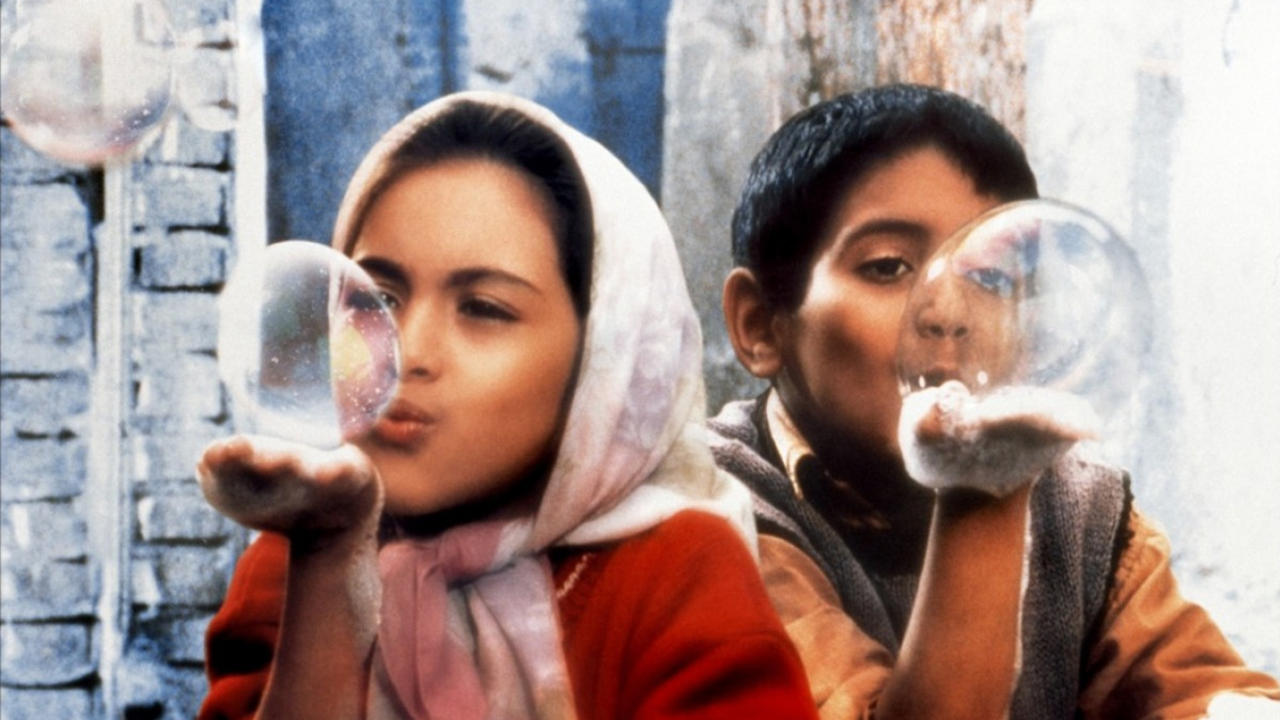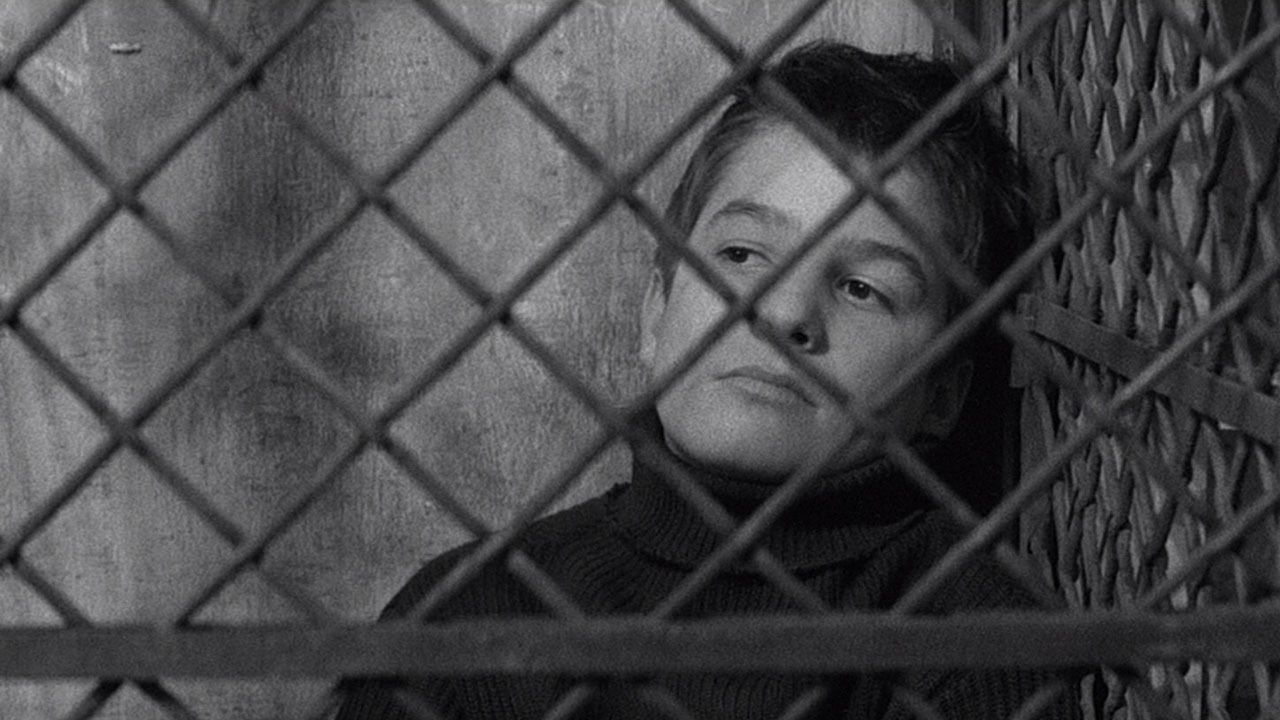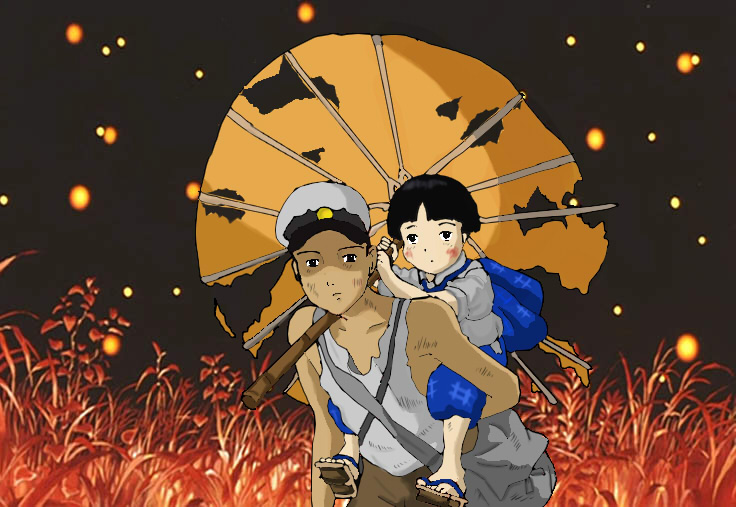7. Pather Panchali (Satyajit Ray, 1955)
Adapted from the novel of the same name by Bibhutibhushan Bandopadhyay, Pather Panchali is the first film of what would become known as The Apu Trilogy and the directorial debut of Indian master filmmaker Satyajit Ray.
Harihar Roy (Kanu Banerjee) lives in poverty with his wife Sarbajaya (Karuna Banerjee) and two children, Durga (Uma Dasgupta) and Apu (Subir Banerjee), in rural Bengal. Also living in their dilapidated house is his elderly cousin Indir Thakrun (Chunibala Devi). When Harihar leaves for the city to try to make a living as a writer, the situation at home worsens.
Not only does Sarbajaya resent having to take care of her husband’s aging crippled cousin, the family also slips into further poverty as a result of Harihar not being around. Despite all this, Durga and Apu know no better and experience the world through the wondrous and innocent eyes of children. But as time progresses, poverty catches up with the family after Indir passes away and Durga gets seriously sick with her mother having no means to properly take care of her.
Clearly influenced by Italian neorealism as well as the poetic style of Jean Renoir (who Satyajit Ray had worked for as an assistant director when he shot his film The River in India), Pather Panchali is amongst the most important Indian films ever made and part of the Parallel Cinema movement which provided a realistic alternative to Bollywood cinema which India is primarily known for.
Ray worked with mostly non-professional actors and an inexperienced crew, shot on location and took three years to finish the movie due to severe budget constraints. The first film to gain widespread critical acclaim outside of India, Pather Panchali won the Best Human Document Award at Cannes as well as an OCIC Award for Satyajit Ray whilst it was also in the running for the Palme d’Or. The film also won Best Foreign Film at the National Board of Review and the Kinema Junpo Awards.
6. Los Olvidados (Luis Buñuel, 1950)
The first true international success for famous surrealist director Luis Buñuel, Los Olvidados is a Mexican social realist drama with some surreal elements.
The film follows a gang of juvenile delinquents in the slums of Mexico City, focusing on El Jaibo, the older relentless leader of the gang who has escaped juvenile detention, and Pedro, the youngest gang member who still has some decency left in him. As the gang terrorise those who are even more unfortunate around them, young Pedro slowly also falls victim to utter corruption, caught up in a cycle of poverty and despair, which is completely beyond his control.
Before this film, Luis Buñuel was primarily known for the two surrealist masterpieces he had made twenty years earlier in collaboration with Salvador Dali. Los Olvidados however put him firmly back on the map and the film can be seen as a precursor of the many films about underprivileged youth which were to follow in the next two decades.
Far from the surrealist works the director would become famous for, this social realist film still contains a few stunning dream sequences, which display the master’s penchant for surrealism. Los Olvidados won Buñuel Best Director at Cannes , whilst the movie was nominated for the Grand Prize of the Festival too. In Mexico, Buñuel won the Golden Ariel whilst the film won an additional ten Silver Ariels, including Best Director, Cinematography and Screenplay.
5. Au Revoir Les Enfants (Louis Malle, 1987)
Based on his own experiences as a boy during World War II, Au Revoir Les Enfants was written, produced and directed by Louis Malle and stars Gaspard Manesse and Raphael Fejto.
The story takes place in a Catholic boarding school for boys from wealthy families in Nazi-occupied France during 1944. Julien (Manesse) has been living at the school, where life seems more or less normal and sheltered from the daily realities of war, for some time, only returning home to Paris for the holidays occasionally.
One day a new boy arrives, Jean (Fejto), and whilst the boys initially don’t get along great, soon they become the best of friends. But Jean has a secret. He is one of a few Jewish boys the school enrolled under false names in order to protect them from prosecution by the Germans.
More than anything a story about boys just being boys (albeit under extraordinary circumstances), growing up and forming friendships, Au Revoir les Enfants is a Holocaust film that doesn’t deal directly with its horrific details but examines it from the perspective of young children growing up whilst being relatively protected from its realities (although its quite clear that Jean’s family has not been able to find sanctuary).
The two lead child actors are fantastic, as is the rest of the cast, and Malle directs the story of his own childhood with grace and sensitivity. The film was nominated for two Academy Awards (Best Foreign Film and Original Screenplay), won seven César Awards in France, including Best Film, Director and Screenplay, as well as five major prizes at the Venice Film Festival, including the Golden Lion.
4. Come and See (Elem Klimov, 1985)
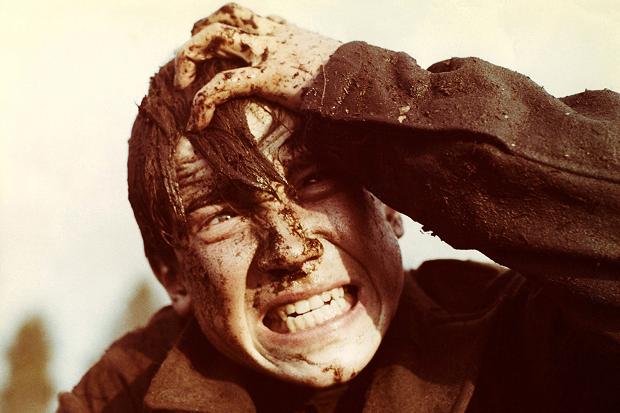
Based on the real-life experiences of Ales Adamovich, who co-wrote the screenplay with director Elem Klimov, Come and See is a 1985 Soviet war drama and an all out nightmare.
Florya (Alexei Kravchenko) is a thirteen year old boy from Belarus in 1943. After digging up an abandoned rifle, he joins the partisans against the wishes of his mother, who has already lost her husband to the war. At the partisan camp however, Flyora is left behind when they leave to fight the Germans. He befriends a young beautiful girl, Glascha (Olga Mironova), but soon after they are caught up in a bombing, leaving Flyora deaf and confused.
When they make their way back to Flyora’s old village, they find it raided by Germans and all villagers slaughtered. Flyoraa and Glasha get separated and after some further traumatizing events, Flyora ends up in a village which is also raided by Nazis and burnt to the ground, killing virtually all who live there in the process and leaving Flyora on the verge of madness.
A haunting and brutal look at World War II from the Soviet side, Come and See has a very loose structure and plays out like an increasingly surreal and nightmarish vision. Fifteen year old Alexei Kravchenko gives a stunning performance as the boy who experiences so much horror his young mind is unable to process it all.
Come and See was a huge box-office hit in Russia, winning both the Golden and FIPRESCI prize at the Moscow International Film Festival . A critical hit in the rest of the world, the movie was entered as the Soviet entry for the Best Foreign Language Film at the Academy Awards, but wasn’t accepted as a nominee.
3. Children of Heaven (Majid Majidi, 1997)
Written and directed by Majid Majidi, Children of Heaven is a Iranian childhood/family drama and the first ever Iranian film to be nominated for Best Foreign Film at the Academy Awards in 1998.
Ali (Mohammad Amir Naji) and Zahra (Mir Farrokh Hashemian) are a brother and sister who live in a poor area of Tehran with their parents. The film starts as Ali is doing errands for his family and stops to do some groceries, leaving his sister’s shoes, which he just had mended, outside. By mistake, they are taken by a man collecting old plastic bags and Ali has to confess to his sister that he has lost her precious shoes.
Afraid of being reprimanded by their father, as the family has no money to buy a new pair, Ali and Zahra decide to share Ali’s pair of sneakers as Zahra has school in the mornings whilst Ali goes to school in the afternoon. But sharing a pair of shoes and keeping this a secret from their dad turns out to be quite a challenge for the little siblings.
A simple story told from the perspective of the children, Children of Heaven is a beautiful humanistic story about innocence and love amongst family. Majidi manages to coach great performances from all his actors and the film was shot in secret as much as possible to capture the most authentic atmosphere of Tehran streets possible.
The film was the first Iranian film to be nominated for Best Foreign Film at the Academy Awards and won four awards at the Montréal World Film Festival (Grand Prix des Amériques, FIPRESCI, People’s Choice and the Prize of the Ecumenical Jury). A breakthrough film for its director in the West and for Iranian cinema as a whole, Children of Heaven is simply beautiful.
2. The 400 Blows (François Truffaut, 1959)
One of the seminal films of the French New Wave, François Truffaut’s The 400 Blows remains one of the most powerful stories of troubled and misunderstood early adolescence to have ever graced the screen.
Antoine Doinel (Jean-Pierre Léaud) lacks the attention that he needs and constantly gets into trouble, both at home and at school. He often runs away, wandering the streets of Paris, and delves into petty crime but when he’s caught one day stealing a typewriter from his stepfather’s office, his family has had enough and decide to turn him over to the police. From there he’s transferred to an observation center for troubled youth.
Drawing inspiration from his own troubled childhood,Truffaut’s first film was released the same year as Jean-Luc Godard’s Breathless and helped define the Nouvelle Vague with its location shooting, use of natural sound, long takes and contemporary social issue subject matter.
And one year after Truffaut was banned from Cannes for his critical harshness, he received the prize for Best Director from the prestigious festival. A milestone in French cinema and arguably truffaut greatest film in a lengthy and highly impressive career.
1. Grave of the Fireflies (Isao Takahata, 1988)
Based on the semi-autobiographical novel of the same name by Akiyuki Nosaka, Grave of the Fireflies is a landmark anime and possibly one of the most gut-wrenching films you’ll ever see.
The film opens just after Japan’s surrender in World War II and we see a young boy, Seita, dying alone in a train station. From there on, the spirit of the boy explains in flashbacks how this has come to be and the viewer is transported to the firebombing of the city of Kobe by the U.S. a few months earlier. Seita and his little sister Setsuko survive the bombing but their hometown is destroyed and their mother is severely burned and dies soon after.
They are initially taken in by an aunt but as food becomes a very scarce commodity, the woman becomes openly resentful of having the kids around and they decide to run away and start living in an abandoned bomber shelter. What initially appears as an idyllic life in the countryside for the two children soon turns into a nightmare as Seita begins to realise how hard it is for them to survive on their own in a war-torn country without food supplies.
Ranking amongst the best anti-war films ever made, Grave of the Fireflies is obviously not your run of the mill anime and might surprise viewers with its adult and tragic subject matter. Without showing hardly any battle scenes, the movie still manages to be one of the clearest indictments against war and its effects on ordinary people far removed from the front. A masterpiece of Japanese anime, Grave of the Fireflies is a must-see movie and utterly heartbreaking.
Author Bio: Emilio has been a movie buff for as long as he can remember and holds a Masters Degree in Cinema Studies from the University of Amsterdam. Critical and eclectic in taste, he has been described to “love film but hate all movies”. For daily suggestions on what to watch, check out his Just Good Movies Facebook page: https://www.facebook.com/goodmoviesuggestions.
